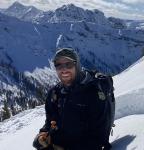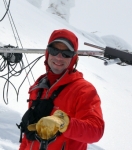Every year throughout the Rocky Mountains we warn that early season snow is not good for stability. Some years are worse than others. In my experience, this year is one of the worst.
Blog List


We recognize that backcountry skiing can be daunting to approach. That’s why Ben Goertzen and the Friends of the Gallatin National Forest Avalanche Center have teamed up to help breakdown some of the most prominent barriers of entry to backcountry skiing through this campaign.


Thanks for a wonderful winter. We concluded our 29th season after 129 daily avalanche forecasts between November 30th and April 7th. Additionally, we issued 14 preseason information bulletins and have 7 post season bulletins scheduled.

Happy New Year.
I want to take this time to highlight a new things happening at the GNFAC, both with personnel and on our website.
New Forecaster

The forecast area of the Gallatin National Forest Avalanche Center (GNFAC) includes Cooke City, a snowmobiler Mecca. The terrain is big, open, accessible, within view of Yellowstone National Park and deadly.

After the two snowmobiler avalanche fatalities on Reas Peak in the Centennial Range in January 2018 we created a webpage so riders could get good, relevant information regarding snowpack and avalanches.

Saddle Peak sits south of Bridger Bowl as a pair of equally high points on the ridgeline. The familiar eastern slope rises 3,500 feet above the highway on the way to Bridger Bowl, and provides an iconic view to those at the ski area. The peak’s extraordinary gullies and faces are the siren’s song to the southwest Montana powder skier. Access to the summit is easy.

Published in the Winter 2018 issue of Outside Bozeman


On September 16th winter arrived with a foot of snow in the mountains. On the 17th a skier triggered the first avalanche of the season. On the 19th, after continued snowfall, Alex issued the first avalanche information bulletin, the earliest in 28 years of operation.

On September 16th winter arrived with a foot of snow in the mountains. On the 17th a skier triggered the first avalanche of the season. On the 19th, after continued snowfall, Alex issued the first avalanche information bulletin, the earliest in 28 years of operation.

By Ron Simenhois, Doug Chabot, Karl Birkeland and Ethan Greene

By Ron Simenhois, Doug Chabot, Karl Birkeland and Ethan Greene

Impulse decision making may lead backcountry travelers into harm’s way. When riding in the backcountry, one bad decision can offset multiple good ones. Looking at avalanche accidents through this lens, a question arises: Were the decisions that contributed to an avalanche accident made with thought and measurable information, or were they made impulsively?

A large, 8-10’ deep avalanche on Woody Ridge outside of Cooke City yesterday (1/30) surprised me and is making me reexamine what I know – and what I don’t know – about the snowpack in the Cooke City area. I'm giving this zone a lot of thought because, depending on what the next storms do, we may be at the start of a significant avalanche cycle.


Being prepared to play in the backcountry includes prepping your gear, your mind, and your partner. All are important and each requires separate actions. Many accidents result from a cascading failure stemming from a lack of preparation.

Introducing the GNFAC’s New Website!
New look. New feel.
Greetings from the GNFAC.
We just launched our new website today and hope you find it easier to navigate and use. There are two major changes:
1. The site is mobile friendly.

Backcountry skiing and snowmobiling has exploded in popularity over the past 10 years. Every winter more skiers and riders hit the backcountry in pursuit of steep faces and untracked powder. This type of riding has increased the inherent risk of being caught in an avalanche and on average, 30 people die in avalanches every year in the United States.
